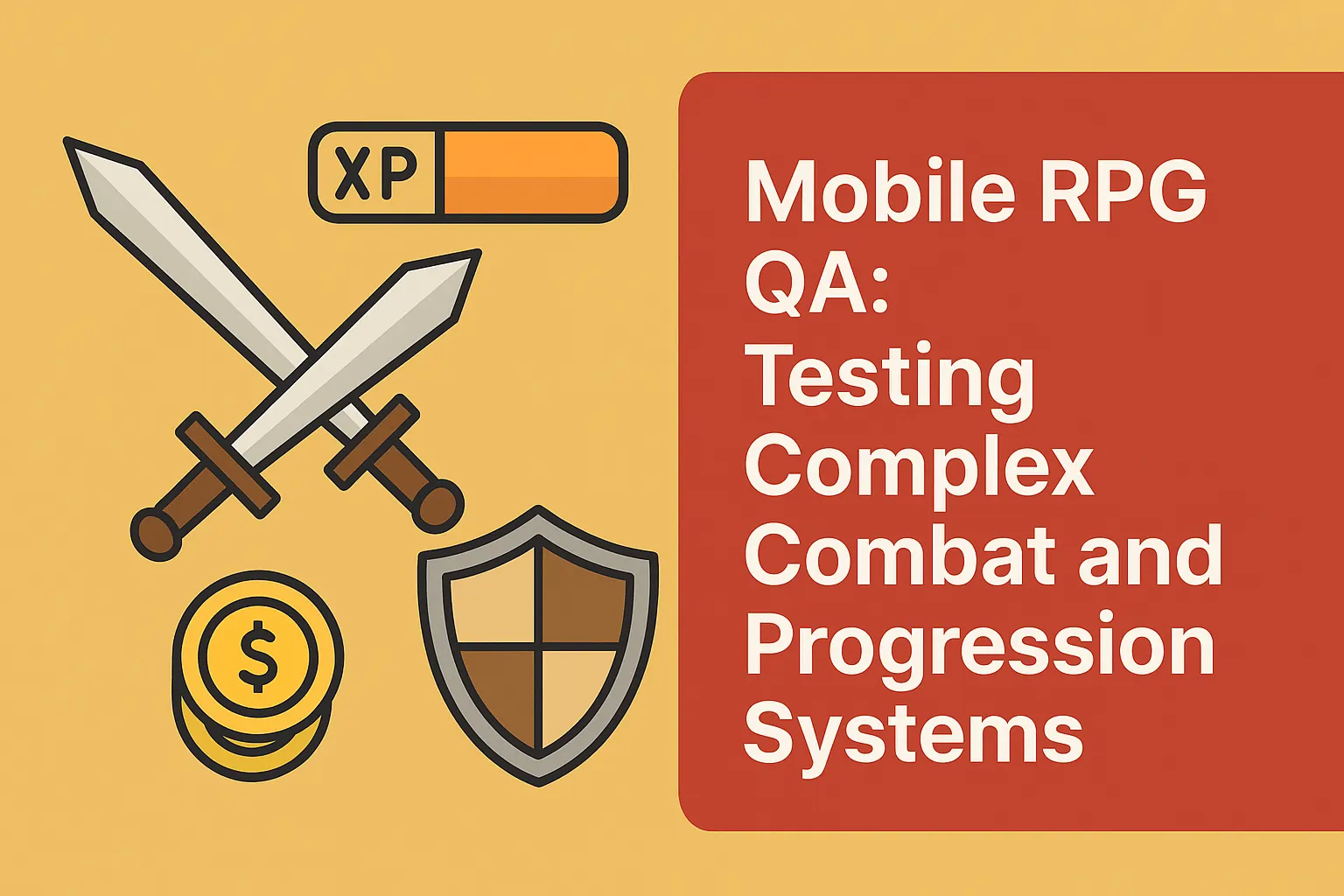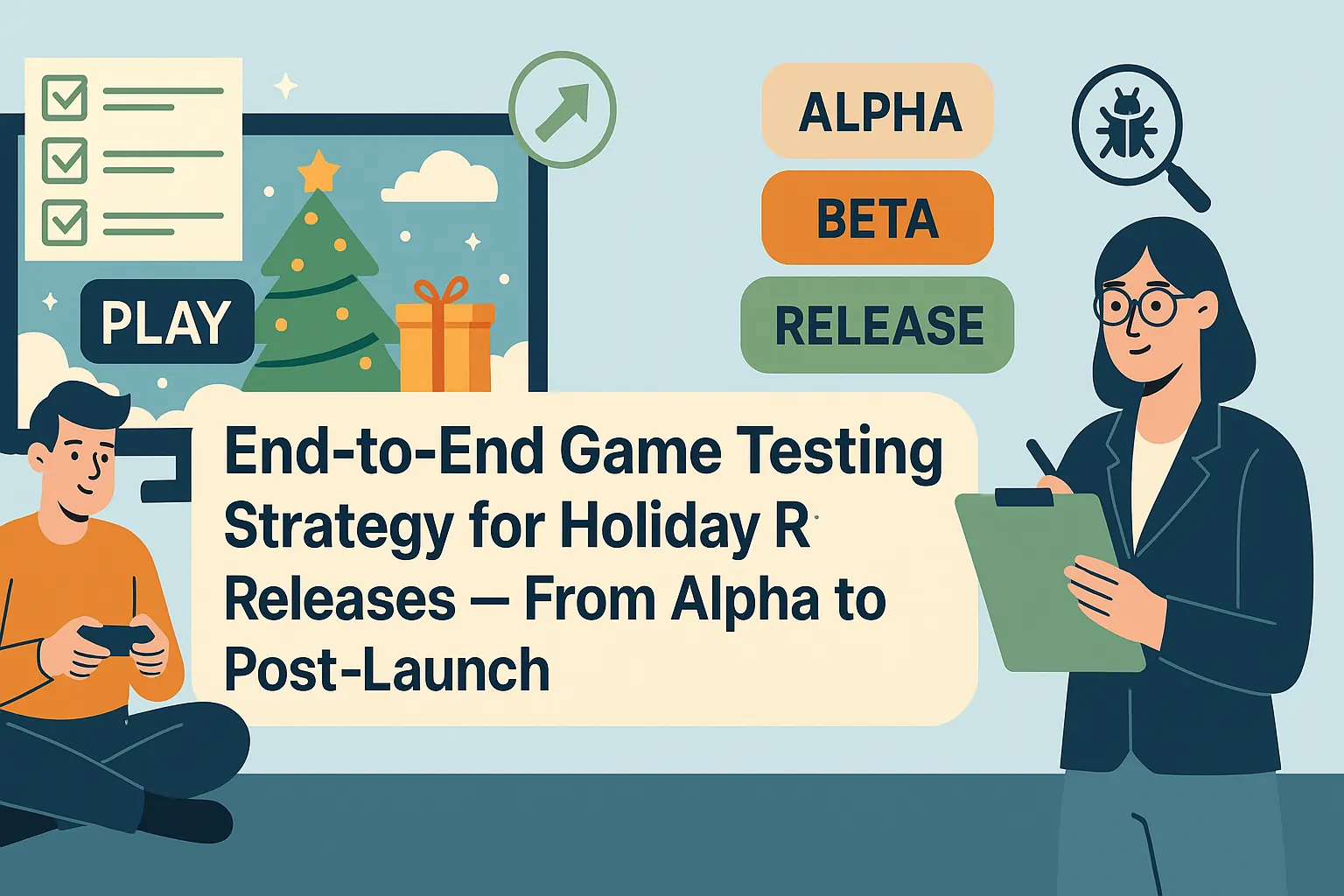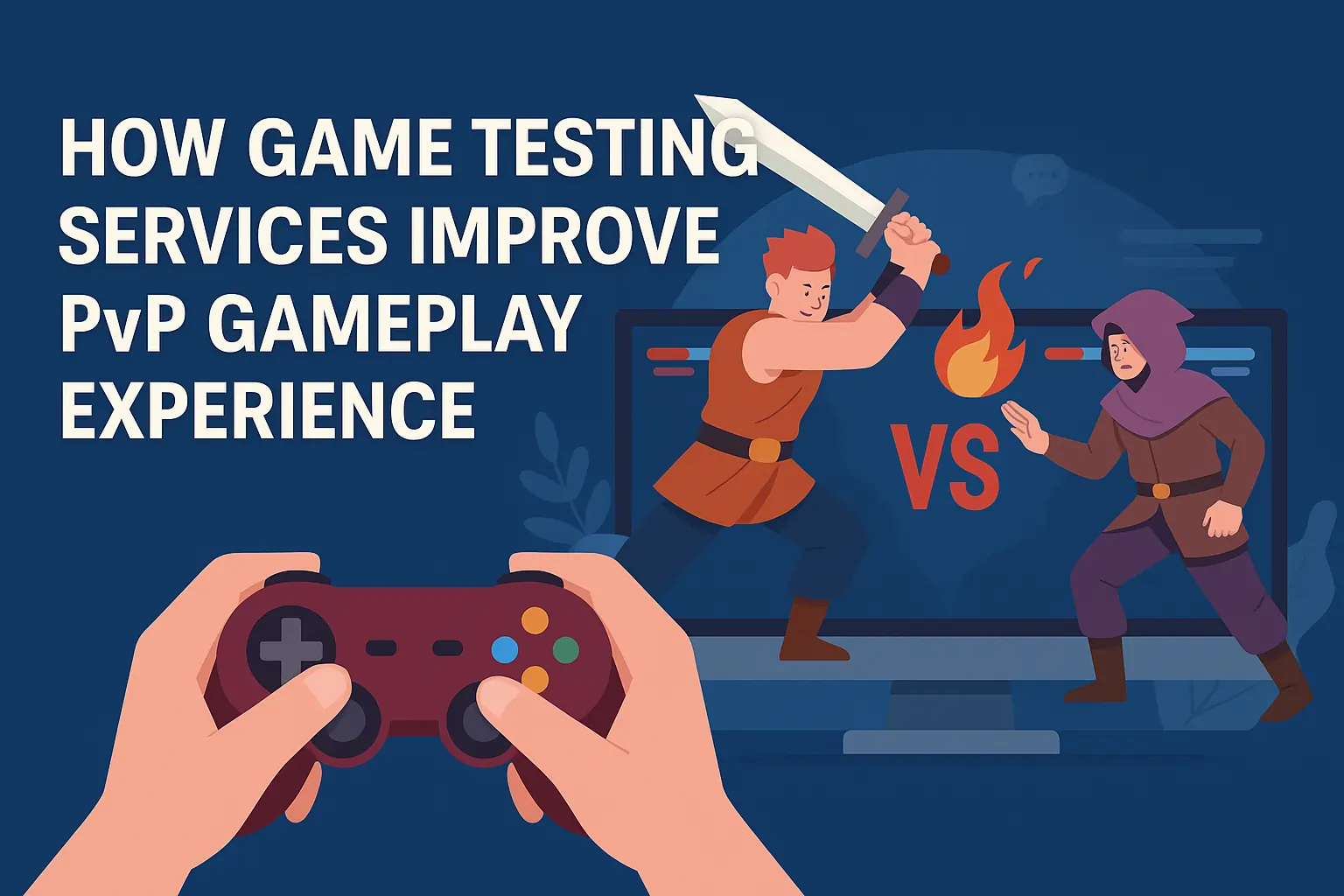The Impact of Video Game Testing Services on the Gaming Experience
Creating a video game is an intricate and multifaceted process that combines creativity, technology, and extensive testing to deliver engaging and enjoyable experiences for players. From initial brainstorming sessions to the final release, each phase of development is crucial, especially when it comes to ensuring quality through video game testing services. This comprehensive guide will delve into the various stages of video game development, highlighting the importance of testing and quality assurance in delivering a successful product.
The Conceptual Phase
1. Brainstorming Ideas
The foundation of any successful video game begins with a solid concept. This initial brainstorming phase is essential for generating innovative ideas. It often involves gathering a diverse team of creatives—game designers, writers, artists, and developers—to collaborate and share perspectives. Here are some key aspects to consider during brainstorming:
- Genre Exploration: Consider different genres such as action, adventure, RPG, puzzle, or simulation. Each genre has its own audience and gameplay mechanics, which can shape the game’s design.
- Unique Selling Points (USPs): Identify what will make your game stand out from existing titles. This could be a unique mechanic, an intriguing storyline, or a distinctive art style.
- Target Audience: Define your audience demographic. Understanding who will play your game is critical for making design choices that resonate with them.
2. Storyline Development
Once the initial ideas are established, developing a compelling storyline is crucial. The narrative drives player engagement and adds depth to the gameplay experience. Key elements to consider include:
- Character Development: Create relatable characters with clear motivations, goals, and flaws. Players should feel invested in their journeys.
- World-Building: Develop a rich, immersive game world. This includes not just the setting but also the rules, lore, and cultures that exist within it.
- Plot Structure: Outline the main story arc, including key conflicts, climaxes, and resolutions. A well-structured plot keeps players intrigued and encourages them to progress through the game.
3. Character Design
Characters are often the most memorable aspects of a game. Effective character design involves:
- Visual Style: Decide on a visual aesthetic that matches the game’s tone and setting. Consider the color palette, design elements, and overall look.
- Abilities and Traits: Define each character’s unique skills and characteristics, which will influence gameplay and player strategy.
- Backstory: Develop backstories for characters to enhance depth and provide context for their actions within the game.
4. Game Mechanics
Game mechanics are essential as they determine how players engage with the game. During this critical phase, developers focus on the following key elements:
- Define Controls: Developers should design intuitive control schemes that enhance the overall gaming experience. It’s important to prioritize simplicity and fluidity in controls, as overly complex systems can lead to player frustration. A well-thought-out control scheme allows players to immerse themselves fully in the game without unnecessary barriers.
- Establish Objectives: Clear objectives are vital for guiding players throughout the game. Developers should outline specific goals for players to strive for, whether it’s completing missions, solving challenging puzzles, or overcoming enemies. Well-defined objectives not only enhance player engagement but also provide a sense of direction and purpose.
- Design Reward Systems: A robust reward system is crucial for keeping players motivated and encouraging continued gameplay. Developers should create incentives that can include leveling up, achieving milestones, or unlocking new content. Reward systems play a significant role in enhancing player satisfaction and fostering a sense of accomplishment as they progress through the game.
Building the Game World
1. 3D Modeling
Creating a visually stunning game world involves detailed 3D modeling. This step transforms concepts into tangible assets. Important aspects include:
- Environment Design: Craft diverse environments that players can explore. This can range from expansive landscapes to intricate indoor settings.
- Character Models: Design characters with attention to detail. This includes facial expressions, body language, and animations that reflect their personalities.
2. Texturing
Texturing adds realism to 3D models. Effective texturing techniques include:
- Surface Details: Apply textures that mimic real-world materials, enhancing the immersion. For example, a wooden surface should look and feel distinct from metal.
- Lighting Effects: Utilize lighting to create atmosphere. Different lighting techniques can evoke various emotions, such as tension or tranquility.
3. Sound Design
Sound design is vital for enriching the overall player experience and creating an immersive environment. Key elements to focus on include:
Sound Effects: Integrating audio elements that correspond with in-game actions is essential. This includes sounds for footsteps, weapon fire, and ambient environmental noises. Well-crafted sound effects not only enhance realism but also contribute to the game’s atmosphere, making it more engaging for players.
Background Music: Developing a compelling soundtrack is crucial for setting the mood and enhancing gameplay. The background music should dynamically align with various game scenarios, enriching the emotional experience during pivotal moments. A thoughtfully composed score can evoke feelings of tension, excitement, or tranquility, significantly influencing how players perceive the game.
Coding and Game Mechanics
1. Programming Languages
Coding serves as the foundation of game development, enabling developers to transform their creative concepts into reality. Various programming languages are employed in the industry, including:
C++
Recognized for its high-performance capabilities, C++ is commonly utilized in large-scale game projects, particularly those that require extensive graphics processing. Its efficiency makes it a popular choice for developing complex game engines.
C#
C# is widely used in Unity game development due to its user-friendly syntax and comprehensive libraries. This language simplifies many aspects of game creation, making it accessible for both beginners and experienced developers alike.
Python
While Python may not be the primary choice for final game products, it is often leveraged for scripting and prototyping purposes. Its simplicity allows for rapid development and quick iterations, making it a valuable tool during the early stages of game design.
2. Character Interactions
Incorporating character interactions is essential for enabling players to engage meaningfully with both characters and the game environment. Key aspects to consider include:
- Dialogue Systems: Developing a branching dialogue system is crucial for providing players with choices that can affect their experience and the narrative direction. By allowing players to make decisions in conversations, developers can create a more personalized and impactful storytelling experience.
- AI Behaviors : Creating realistic artificial intelligence for non-player characters (NPCs) is important for enhancing immersion. NPCs should be programmed to respond to player actions in a credible way, making the game world feel more alive and dynamic. Well-designed AI behaviors can enrich interactions, making players feel as though their choices truly influence the game world.
3. Environmental Responses
Creating an interactive game world involves coding environmental responses. This includes:
- Destructible Environments: Allow players to alter the game world dynamically. For instance, breaking walls or altering landscapes can add layers of gameplay strategy.
- Dynamic Weather Systems: Introduce environmental changes that affect gameplay, such as rain affecting visibility or terrain.
Early Testing Phases
1. Alpha Testing
Alpha testing is the first stage of testing, conducted with a limited audience. It serves several purposes:
- Identifying Major Bugs: This phase is crucial for discovering critical glitches that could prevent gameplay.
- Gathering Core Feedback: Alpha testers can provide insights into gameplay flow, mechanics, and overall enjoyment.
2. Beta Testing
Once alpha testing is complete, the game moves into beta testing, which is broader in scope. Key components of beta testing include:
- Real-World Testing: Inviting external players allows developers to observe how the game performs under different conditions and systems.
- Usability Feedback: Beta testers can identify usability issues that may not have been evident during alpha testing.
Game Testing Methodologies
1. Functional Testing
Functional testing ensures that all game features operate as intended. Key aspects include:
- Feature Verification: Each game element must be tested to confirm it functions according to design specifications.
- Error Checking: Identifying and documenting errors is essential for tracking down and fixing bugs.
2. Regression Testing
Regression testing is conducted after updates or changes are made. This type of testing involves:
- Testing for Broken Features: Ensuring that new code does not disrupt existing functionality.
- Validation of Fixes: Confirming that reported bugs have been adequately addressed and resolved.
3. Usability Testing
Usability testing focuses on the player experience and is essential for refining gameplay. It includes:
- Assessing User Experience: Gathering qualitative feedback on navigation, interface design, and overall enjoyment.
- Identifying Pain Points: Recognizing areas where players struggle, allowing developers to make necessary adjustments.
Balancing and Optimization
1. Balancing Gameplay
Balancing gameplay is crucial for maintaining player engagement. Effective strategies include:
- Difficulty Adjustments: Tailoring the game’s challenge to accommodate various player skills helps prevent frustration or boredom.
- Reward Systems: Ensuring that rewards feel satisfying and are well-paced can motivate players to continue progressing.
2. Optimization
Optimizing game performance ensures a smooth user experience across devices. Techniques include:
- Code Refinement: Streamlining code to improve efficiency and reduce load times is vital for player retention.
- Asset Management: Reducing the file sizes of textures and models helps improve performance, especially on less powerful hardware.
Feedback and Iteration
- Gathering Player Feedback Acquiring player feedback is essential for improving the game. Several methods can be utilized to gather insights, including:
- Surveys and Interviews Implementing surveys allows developers to collect quantitative data from players, while conducting interviews provides qualitative insights into their experiences. This combination enables a comprehensive understanding of player preferences and areas for improvement.
- Playtesting Sessions Hosting playtesting sessions gives developers the opportunity to observe players as they engage with the game. By monitoring their interactions and behaviors, valuable information can be gathered about user experience, helping to identify both strengths and weaknesses in the game design.
2. Iteration Process
Iterating based on player feedback is essential for improving the game. This involves:
- Implementing Changes: Making adjustments based on feedback can enhance gameplay and address player concerns.
- Continuous Testing: Repeating testing cycles after each change ensures that new updates improve the experience without introducing new issues.
The Role of QA Teams
Quality Assurance (QA) teams are integral to the game development lifecycle, tasked with verifying that the game meets established quality benchmarks before it is released. Their primary duties encompass:
- Comprehensive Testing: QA teams engage in rigorous testing across various facets of the game, examining everything from gameplay mechanics to visual elements. This thorough scrutiny is vital for detecting any issues that could impair the user experience.
- Documentation and Reporting: QA teams meticulously document all identified bugs and their respective fixes. This detailed record-keeping provides developers with valuable insights into the nature of the problems, facilitating a more structured approach to addressing them effectively.
- Final Verification: As the launch date approaches, QA teams conduct final assessments to ensure that the game is fully refined and ready for players. This concluding phase of testing is critical in guaranteeing that the product aligns with the quality expectations of the audience.
Preparing for Launch
1. Final Testing
As the launch date approaches, final testing becomes critical. Developers should focus on:
- Comprehensive Bug Fixing: Ensuring all known issues are resolved before release.
- Polishing Gameplay: Making final adjustments to enhance user experience, such as tweaking mechanics and graphics.
2. Server Stress Testing
For online games, server stress testing is vital to ensure stability under high traffic. This includes:
- Simulating User Load: Testing the game’s performance under peak conditions helps identify potential points of failure.
- Identifying Server Bottlenecks: Recognizing areas that could become overwhelmed helps prepare for a smooth launch.
3. Final Polishing
Final polishing involves ensuring that the game meets all quality standards before release. Considerations include:
- Graphics Enhancements: Making last-minute adjustments to visual elements ensures a cohesive and appealing look.
- Audio Finalization: Ensuring that all audio elements are balanced and synchronized can significantly impact the overall experience.
Conclusion
Developing a video game is a multifaceted endeavor that demands careful planning, precise execution, and thorough testing. Video game testing services are crucial to this process, enabling developers to pinpoint and fix issues that could hinder gameplay, resulting in a polished and immersive experience for players. By adhering to the detailed stages presented in this guide, developers can effectively navigate the complexities of game creation, producing engaging titles that resonate with audiences.
In a rapidly changing gaming landscape, emphasizing quality and enhancing player experience is vital for the success and longevity of any game. Companies like Testers HUB, recognized among the top game testing companies and video game testing companies, offer invaluable services that help developers uphold high standards. By tapping into the expertise of game tester companies and utilizing dependable game testing websites, developers can refine their products and position themselves as some of the best video game sites available.












